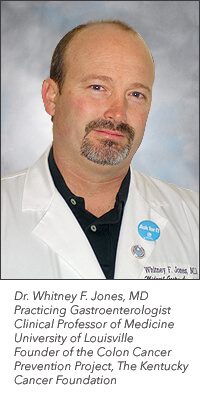 The purpose of this post is to thank our community of physicians, nurses, scientists and industry for their leadership in making a real difference in the public health of the nation through colorectal cancer (CRC) screening.
The purpose of this post is to thank our community of physicians, nurses, scientists and industry for their leadership in making a real difference in the public health of the nation through colorectal cancer (CRC) screening.
Yet, if we are to hit the lofty goals set by the National Colorectal Cancer Roundtable for 2018 of screening 80 percent of the population at risk, we must work even harder and smarter as we have challenging and important work ahead of us.
Several issues stand out.
First, those of us who fight CRC everyday must find a way to engage and ramp up enthusiasm, effectiveness and efficiency of CRC screening at the primary care provider and medical home platforms.
Second, endoscopists need to embrace and support evolving, non-invasive methods to rapidly maximize the number of persons at risk receiving appropriate screening in the shortest time frame possible.
Third, the national CRC community should dedicate itself to improving screening rates in the worst screening states. To be clear, this generally refers to the broad south and the Appalachian states. Compassion and our goals dictate that their success is our success. We must invest through specific policies that deliver expertise, models, and insights as well as equalizing taxpayer supported resources from existing agencies (Screen for Life, CDC) to states with the lowest screening rates and therefore in the greatest need.
Finally, we need a new communication strategy to better serve our current screening and diagnostic guidelines. Ten percent of CRC cases now affect people under age 50 and the percentage of rectal cancers under age 50 now approaches 20 percent – a doubling in the last decade alone. By no later that age 40, providers and patients should be made aware of CRC facts including: timely identification and action on pertinent family histories, information about symptoms to reduce delays in diagnosis for those under 50 and importantly to precondition those at normal risk for screening at age 50.
Let’s continue the work together as we make deaths from CRC a thing of the past.
Dr. Whitney Jones is not a paid consultant of Cook Medical.